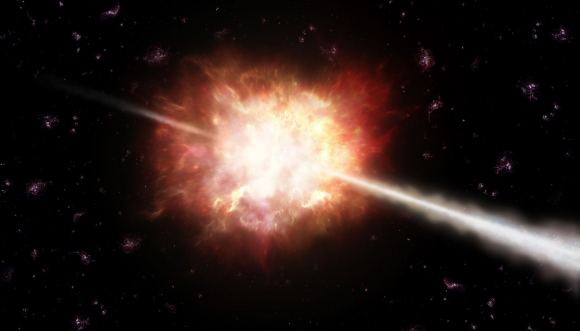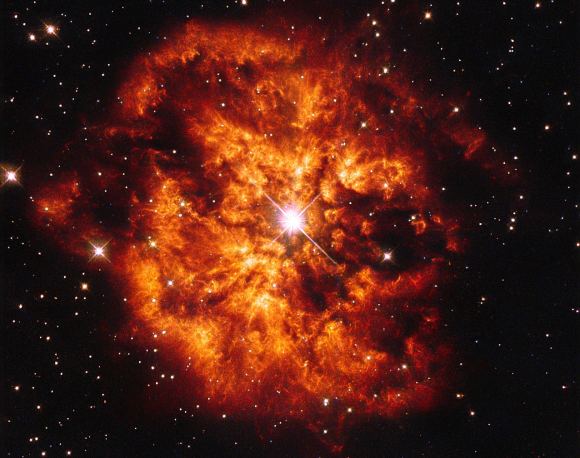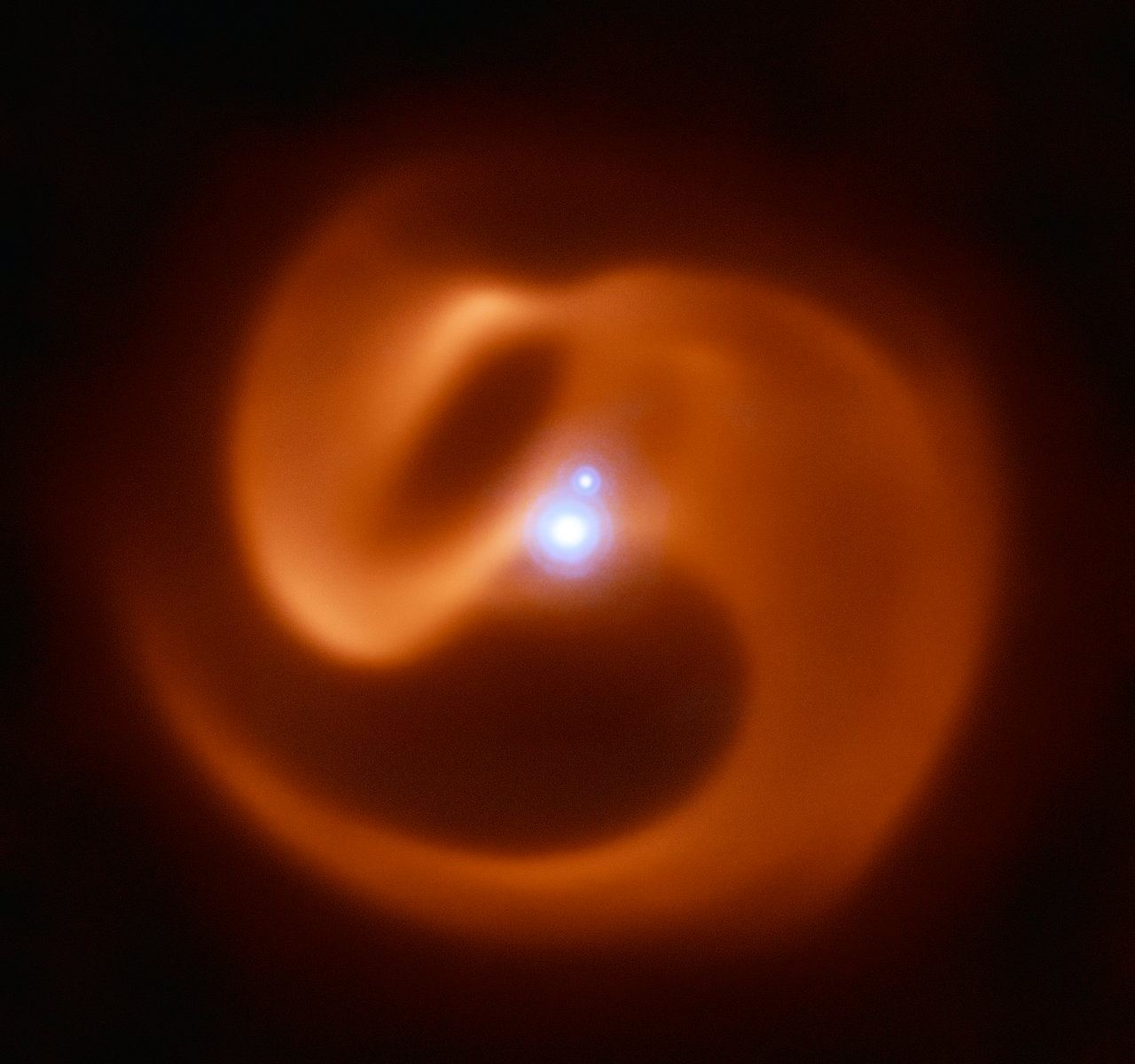When stars reach the end of their lifespan, many undergo gravitational collapse and explode into a supernova, In some cases, they collapse to become black holes and release a tremendous amount of energy in a short amount of time. These are what is known as gamma-ray bursts (GRBs), and they are one of the most powerful events in the known Universe.
Recently, an international team of astronomers was able to capture an image of a newly-discovered triple star system surrounded by a “pinwheel” of dust. This system, nicknamed “Apep”, is located roughly 8,000 light years from Earth and destined to become a long-duration GRB. In addition, it is the first of its kind to be discovered in our galaxy.
The study which describes the team’s findings was recently published in the scientific journal Nature. The team was led by Joseph R. Callingham, a postdoctoral fellow from the Netherlands Institute for Radio Astronomy (ASTRON), and included members from the Sydney Institute for Astronomy (SIfA), the Royal Observatory Edinburgh, the University of Sheffield and the University of New South Wales.
Using the ESO’s Very Large Telescope (VLT), the team captured an image of 2XMM J160050.7-514245, a triple star system that consists of a binary pair and a companion single star surrounded by a cloud of dust. Due to its sinuous shape, which resembles a snake coiled around the stars, the team nicknamed the system Apep. This ancient Egyptian deity was a gargantuan serpent embodying chaos that did battle with the Sun god Ra every night.
This find was both unprecedented and unexpected. As Callingham explained in a recent ESO press release, “This is the first such system to be discovered in our own galaxy. We never expected to find such a system in our own backyard.” Even more interesting is the fact that this system is expected to undergo gravitational collapse and become a long-duration GRB.
As noted, GRBs are among the most powerful explosions in the Universe. These typically last between a few thousandths of a second and a few hours and release as much energy as the Sun will over the course of its entire life cycle. Long-duration GRBs are those that last longer than 2 seconds, and are caused when rapidly-rotating Wolf-Rayet stars go supernova.
This rare heterogeneous class of stars have unusual spectra that indicate the presence of heavy elements and the depletion of hydrogen and strong stellar winds. Some of the most massive stars in the Universe evolve into Wolf-Rayet stars towards the end of their lives and remain in this state for only a few hundred thousands years.

In that time, they generate powerful stellar winds that throw off huge amounts of material at speeds of up to millions of kilometers per hour. In the case of Apep, measurements of its stellar winds indicated that they travel at 12 million km/h (7.45 million mph). It is these winds that are responsible for the dust pinwheel that surrounds this triple star system and its coiled shape.
Basically, the pinwheel formed as a result of colliding stellar winds generated by the binary pair (which appears as a single bright star in the image at top). The binary pair is also responsible for sculpting the pinwheel, where their gravitational influence and orbits are what give it its serpentine shape.
Compared to the stellar winds generated by the binary pair, the pinwheel itself swirls around at a comparatively slow speed of less than 2 million km/h (1.24 million mph). This massive difference is believed to be the result of one of the binary pair launching both fast and slow wind in different directions.
A possible explanation for this is that the binary pair is rotating so fast that it is nearly ripping itself apart (aka. a near-critical rotation). In addition, Wolf-Rayet stars that have such rapid rotations are believed to be what produce long-duration GRBs when their cores collapse at the end of their life cycles.

All of this is what led the international team to conclude that within a few hundred thousand years (a mere blink when it comes to cosmological timescales), Apep will undergo a gravitational collapse and unleash as massive GRB. This event will likely be the first GRB to take place in our galaxy, and will last long enough for astronomers to detect it.
Whether or not those astronomers will be human is another matter entirely. A lot can happen in a few hundred thousands years. Still, finding the progenitor of one of the most energetic events in the Universe in our own cosmic backyard, and knowing that it will one day result in a massive explosion, is quite the accomplishment.
Be sure to check out this ESOcast about the discovery of Apep as well:

